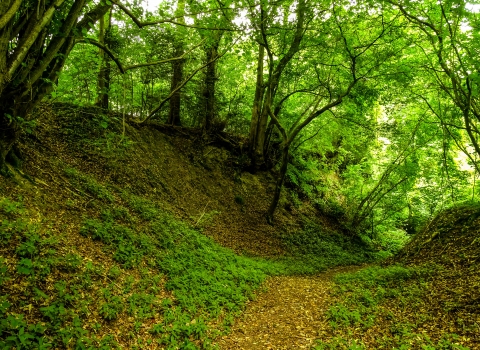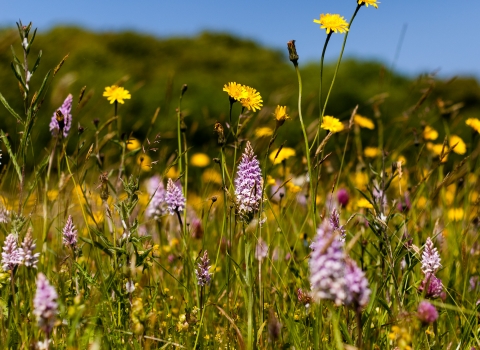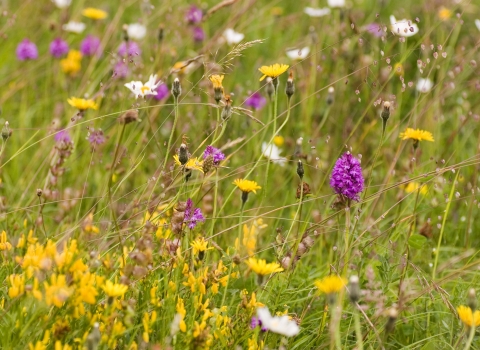
Blackhouse Wood by Paul Lane
Know before you go
Dogs
When to visit
Opening times
Open between dawn and duskBest time to visit
April to OctoberAbout the reserve
The wooded ridge is an important link between the Malvern Hills complex and the Wyre Forest; Blackhouse Wood is just over 1km from The Knapp and Papermill nature reserve. In the 1960s much of the wood was clear-felled and replaced with conifers; visitors today, however, will see the beginnings of a restoration that the previous owner began.
The vivid green heart-shaped leaves of the small and large leaved lime, which grow readily in the woodland, can be seen around the reserve in spring and summer. Large-leaved lime is the rarest of our native lime trees and the trees at Blackhouse form part of a long-studied west Worcestershire population that many believe are remnant of the original wild wood – before human intervention at the end of the last ice age. Hornbeam and oak, an uncommon species mix for Worcestershire and the west of England, can be found growing together in parts of the woodland.
The limestone bedrock of Much Wenlock and Lower Ludlow shale supports a rich mix of flora (calcicolus – calcium loving) that are scarce within Worcestershire. Active ride and glade management benefits wood vetch, nettle-leaved bellflower, rock rose, yellow wort, wild thyme and tutsan. The wood is also notable for the richness of its moths. Monthly surveys recorded 493 species on site within the first year (2014), with little thorn, pauper pug and four-spot footman being the highlights. As with the adjacent Crews Hill Wood there are a number of former hand quarries that run along the western edge of the site. These quarries have made parts of the woodland difficult to manage and are, in part, responsible for the survival of many of the older and more ecologically interesting trees.
Blackhouse would almost certainly be a Site of Special Scientific Interest were it not for the woodland clearance but there are still many interesting ancient woodland features and it was granted Local Wildlife Site status in July 2007. We are supplementing natural regeneration with oak and field maple planting and are managing the hornbeam and veteran lime stools and coppice to maximise their life-span and ensure future succession, widening the main ride system and managing them on a three tier system (bare ground and grass, coppice, and trees) to maximise the opportunities for invertebrates and flora to flourish.
Forestry work usually takes place during the winter months. Our work is designed to improve the woodland for wildlife and the felled timber helps create income for our conservation work across the county. All Trust woodlands are certified with the UK Woodland Assurance Scheme for their high standards of management.
If you're looking for a longer walk, we've had a long association with the nearby Ravenshill Wood nature reserve. Download our 8 mile woodlands and wildlife audio trail to enjoy a walk through four nature reserves in this area.
Thank you
The purchase of Blackhouse Wood would not have been possible without the help and support of:
Our members and supporters
The National Lottery Heritage Fund
Severn Waste Services through the Landfill Communities Fund
The Rowlands Trust
The Banister Charitable Trust
The Edward Cadbury Charitable Trust
The Martin Wills Wildlife Maintenance Trust



